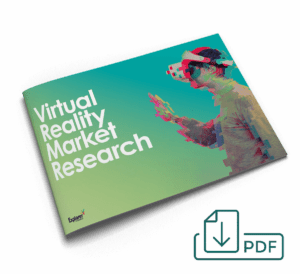As retail experience experts who interact daily with stores, manufacturers, and shoppers, one of the most enduring questions we field is “What does the future of the store look like?” We love this question because the possibilities are nearly endless.
If you’re familiar with Kurzweil’s “Law of Accelerating Returns,” then you already know that the rate of technological advancements is growing on an exponential scale. In a world where new retail technology can be unveiled and almost immediately overshadowed by something even newer, it’s difficult for retailers to keep up with every single advancement. And yet, consumers do expect (sometimes demand) that retailers harness emerging retail technologies to improve the shopping experience.
Where harnessing and maximizing digital retail technology is propelled by technological advancements, the need to progress the shopping experience is propelled by consumer demand. The winning retailers will need to be creative and understand how to surprise customers with concepts that are not only more fun, easier and more personal, but above all relevant and distinctive.
The Future is Experience-Based
In the next five years, the line between online and in-store shopping will continue to blur. It won’t be so much a question of one or the other but rather a combination of both with the goal of delivering the best possible retail customer experience. We’re already beginning to see stores experiment in different ways to improve the shopping experience, by concentrating on immersive retail technology, visual appeal, personalization, product freshness, origin and health. For many retailers, the pandemic was a wake-up call that clearly illustrated the importance of flexibility and accessibility in the path to purchase.
Drive-through pick up locations will continue to grow in popularity in order to meet customers where they are. These trends may have spiked due to global health circumstances, but for many shoppers, pick up and delivery have now been integrated into their personal routine. Additionally, showrooms, where customers can interact with products and services and ask questions before purchasing, will be in increased demand.
In order to free up staff to offer more personalized service, we may see an increase in robots and touch screens used to tackle the more repetitive tasks like shelf restocking and checking out. In general, the role of the store will change so that it can become a place for people to discover and try new products, improve their skills and acquire knowledge.
The Future of Retail is Tech-Forward
Technology will continue to play a more important role in the future of retail. Immersive virtual reality and experiential centers will allow consumers to control the customer experience using technologies such as virtual reality or augmented reality (i.e. any kind of experience that cannot be provided online.) As we’ve mentioned before, IKEA, Warby Parker and L’Oréal and many more are reshaping the definitions of which traditionally-in-store experiences can be replicated in the virtual realm.
Want to learn more about how tech is shaping shopper insights?
Check out our guide to Virtual Reality Market Research!
The Future is Personalized
We may also see brand stores that focus on communicating the brand’s values rather than simply selling products: community involvement, sharing customer stories and providing product and ordering information. Effective communication of a shared ethos between business and consumer can act as a catalyst for brand loyalty. Specialty stores that fill certain niches will continue to thrive physical stores will become more closely linked with shoppers’ smartphones to make the shopping process faster and the shopping experience more appealing. This will be accompanied by faster ways to pay more checkout-free stores and geo-targeted deals. As they enter a store, shoppers will be offered special deals on products tailored to their tastes based on past purchases via their smartphones.
It will become harder to resist online shopping as our homes are outfitted with smarter technology and many repeat purchases will be automatically reordered and delivered to the location of our choice.
By 2025 Most Retailers Will Have Reinvented Their Space
For grocery, that might mean reducing the center of store space with increasing warehouse space in the back. Center store items will be ordered on screen and the rest of the store will be focused on experiences with a focus on fresh and prepared foods. Food is the new fashion and new food concepts are popping up like mushrooms, from market halls to cafés in clothing and book stores.
For fashion and technology, inspiration will play a big role. In addition to the permanent layout of the store, they will need room for flexible departments in order to capitalize on new themes, experiences, interactions and campaigns. A surprising store is in constant motion because this is what keeps customers coming; curious and interested to see what surprises the store has to offer this time.
Malls will need to focus on food, entertainment, music and activities to engage future shoppers. With too many shopping centers becoming interchangeable, it’s becoming more important for shopping centers to tell a strong story and stand out.
If we look 20 years ahead, new retail technologies, not yet invented, will be helping to make shopping experiences more convenient and compelling. The physical and digital worlds will merge to offer new services that we can only imagine today. If you’d like us to come to talk to your team about the store of the future and retail trends, contact us.


